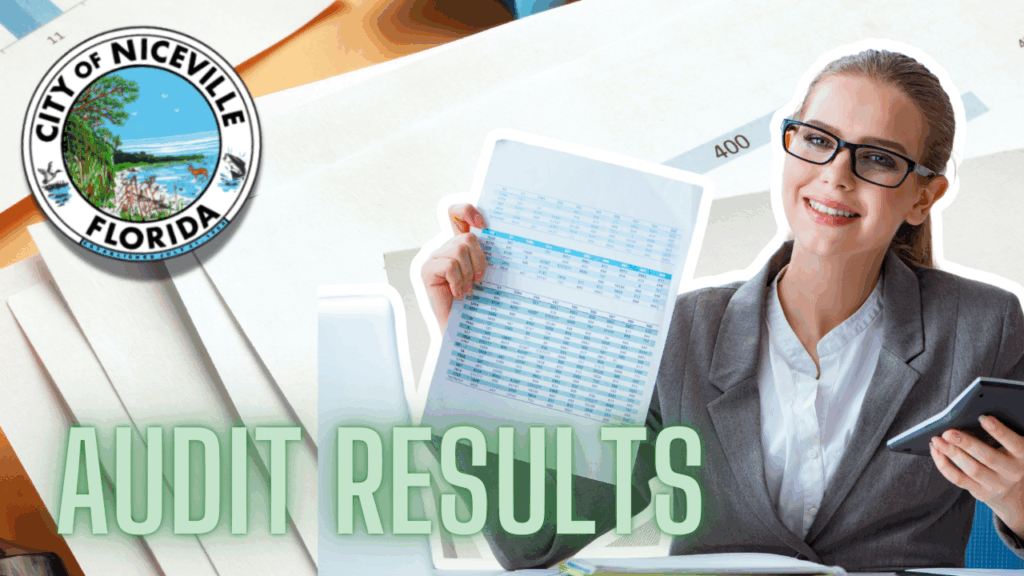
📊 Clean Audit: Niceville received a clean audit opinion with no material weaknesses in financial controls.
💰 Fiscal Trends: The city operated at a 2.6% surplus and saw investment returns grow to nearly 4% in 2024.
🚓 Rising Costs: Spending on public safety and capital projects more than doubled since 2015.
Niceville’s annual financial checkup is in from Warren Averett. The accounting firm in charge of auditing the city annually gave city leaders a rundown of the finer points of their audit at their last city council meeting in April.
Warren Averett reported an unmodified or “clean opinion” of the city’s finances and accounting. “It’s the highest level of assurance we can provide about the city’s financial statements. Professional auditing standards also require us to communicate any significant deficiencies, material weaknesses in internal controls, or material instances of noncompliance with laws, regulations, and grant agreements. We had no material weaknesses and internal controls to report,” Bradley said.
The one deficiency they reported had to do with a series of journal entries that, on their own, would not have been significant. However, because many of these entries took place, it was a cause for concern.
Here are the key points from the audit:
Has this story made a difference for you? Consider making a monthly supporting donation to Mid Bay News so that we can continue to create meaningful local journalism for our community.
Compared to other Florida cities of similar size, Niceville has pretty good metrics. Warren Averett racked and stacked the city versus itself from a year prior, as well as the cities of Longwood, Mount Dora, Lantana, Lady Lake, Miami Springs, and Lynn Haven.
Of the cities compared, Niceville had a property tax rate in the middle of the pack and a middle-of-the-pack assessed value per capita.
The city also reported that 32% of its revenues came through property taxes. This is a big deal in 2025 because Governor Ron DeSantis announced his intention earlier in the Florida State Legislative session to reduce county property taxes. “given the current political climate regarding property taxes in this state, municipalities need to be aware of their reliance on property taxes as establishing ancillary revenue sources may be vital for municipalities that want to continue providing the current level of services that they are to residents,” Bradley told the council.
Niceville’s long-term debt-to-resident ratio, $430, was about $100 less than last year and significantly lower than all other cities of similar size. Longwood has the next lowest ratio, at $997. Mount Dora, Florida, had the highest debt-to-resident ratio at $2,744.
Niceville was right in the middle of the pack again for non-capital expenses (things like gasoline, salaries, insurance, and other non-building costs).
Finally, this past year, Niceville operated at a 2.6% surplus – a 2.4% surplus from last year and a middle-of-the-pack score again. Some cities, like Miami Springs, were operating at a 5% deficit, while others brought in 23% more than they needed.
Warren Averett’s Joel Bradley showed the city leadership the stark difference in the amount of cash on hand for the city compared to the previous four years. At the height of the American Rescue Plan Act money glut in 2022, Niceville had almost a year’s worth of operating expenses. Typically, a city will have no more than six months on hand.
The city has since dropped back to 2020 levels – with about 6.3 months of operating expenses on hand for use.
Niceville’s City Manager David Deitch noted that last year, he planned to invest the city’s money in higher yield investments than they had, which has paid off in the previous two years. Before Deitch’s time as city manager, the city had a return on its investment that rarely exceeded a single percentage point. For reference, an index fund that tracks the S&P 500 index returns about 10% per year for its investors.
Since Deitch took over, the city saw much larger, though still below-market-rate return for stocks. In 2023, Niceville got an ROI of 1.9% and in 2024 the city’s investments returned almost 4%.
The city’s money has increased about 100% from $10 million in 2015 to a little over $20 million in 2024. That number does outpace inflation, which is 34% in the same time period.
The biggest culprits (or cost drivers in government-speak) are:
Register or login with Mid Bay News and never get another pop up on our site!